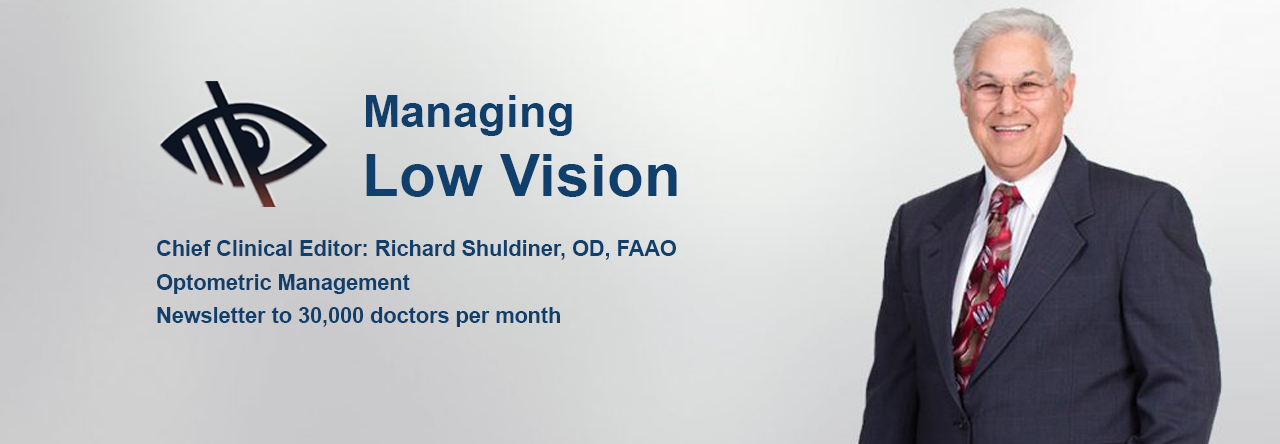By Richard J. Shuldiner, OD, FAAO, FIALVS, Chief Clinical Editor
In Part 1 of this series, I discussed Step One of the 12 Step Shuldiner Low Vision Exam called “Creating Relationships”. The low vision exam can be conducted in many ways as each low vision doctor has developed his or her own procedures. However, the ultimate result should be the same: the patient leaves better than they came in and can now do some or all of the tasks they could not do before.
As explained earlier, The Shuldiner 12 Step Low Vision Evaluation was developed to meet the needs of the vision loss patient in the private practice setting. It takes one hour to complete. Each step has a specific purpose in sending that patient home better than they came in. Step Two is called “Opening Statements”.
This multi-part series will explain each part so that you, the practitioner, will understand what your patient should expect when you refer the patient for low vision care. I teach this 12-step method in a 5-day intensive training and all of the members of The International Academy of Low Vision Specialists (www.IALVS.org) have completed the course.*
In Part Two of this series, The Low Vision Exam: What Your Patient Can Expect, we will discuss the “opening statements” that allow for the evaluation to be completed in one hour or less.
THE PAST
Every living human being has a past with all the stories that go with it. As doctors, we call it the “case history” and need to know certain things about what the patient has gone through, past diagnoses, symptomatology, and timeline of events and procedures. Patients are eager to tell their stories. Herein lies the problem.
The low vision evaluation is NOT about the past! It’s about the future. It’s about how the person is functioning NOW and their goals for the future. As a low vision doctor, I really don’t care about how they got this way, when it started, or what they noticed and when they noticed it. I care about how they are functioning now and what they hope to gain from our visit.
As an amateur student of semantics, I have experimented with wording that gives me the information I need in the quickest amount of time possible. We all know, in private practice, how valuable time is. I say this because having practiced low vision care in a non-profit, agency-based setting for a dozen years prior to offering low vision in private practice, there are major differences. One of them is time spent with the patient.
OPENING STATEMENTS
I know it’s not politically correct to say this, but I really don’t have the time or the desire to listen to the patient stories about how they came to lose vision—not if I want to be able to offer a financially viable low vision service. Low vision patients are upset and have gone through a lot. They want to talk, they need to talk, but not to me. I need to help them function as quickly as I can.
Here is what I developed to allow me to accomplish my job. I say the following exactly the same way to each patient as soon as they are seated in the exam room:
“Mrs. Jones, I need to ask you a lot of questions, because there’s a lot of things I need to know”. (They usually say: “I know”).
- “AND there’s a lot of things I DON’T need to know”. (They usually laugh).
- “So, I may interrupt you from time to time”. (They usually say OK).
- “Because I only have one hour to send you home better than you came in”. (They usually say “thank you” or “I hope so”.
- Believe it or not, that usually handles the whole exam dialog and lets me help them with their goals. From time to time, when they ramble, I will let them know that it’s information I don’t need to help them go home better than they came in.
The vision loss patient desperately wants to leave better than they walked in. So, reminding them of that goal keeps them on track and stops the wandering off-topic.
Watch for part 3, The Case History in Two Minutes.
Happy New Year and remember, referral of vision loss patients for low vision rehabilitation is now the STANDARD OF CARE.

